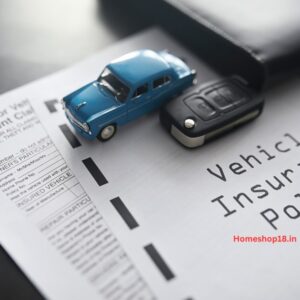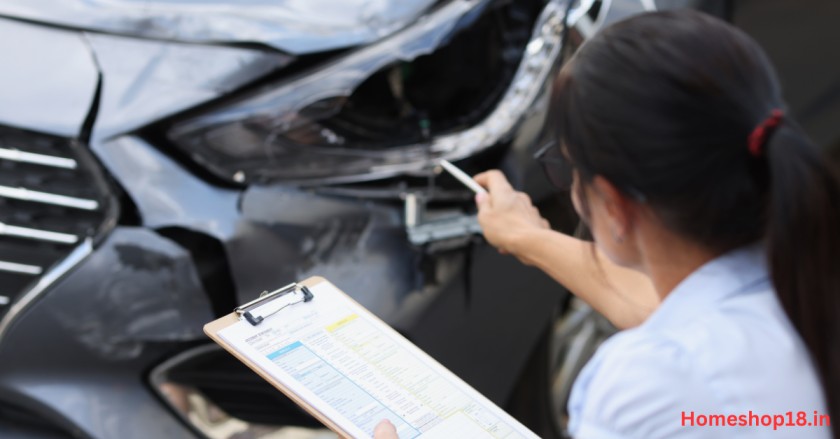How to Claim Insurance for Car Damage
Introduction
How to claim insurance for car damage Accidents and car damage can happen anytime — a momentary lapse on the road, a pothole, or even a natural event can leave your vehicle needing costly repairs. Thankfully, car insurance helps you recover these expenses. But many car owners still struggle with one question:
“How do I claim insurance for car damage?”
This article walks you through the complete car damage claim process, real-life experiences, what to expect during settlement, and the common pitfalls to avoid. Whether you own a private car or a commercial vehicle, understanding the correct claim procedure can save you time, stress, and even money.
Step-by-Step Process to Claim Insurance for Car Damage
Step 1: Report the Claim Immediately
When your vehicle is damaged, the first step is to contact your insurance company’s helpline.
You can find the number in your policy booklet, insurance card, or on the company’s website.
If you bought insurance through a broker or consultant, they can also assist you.
Tip: Always report the claim immediately after the incident. Delays can lead to rejection.
Step 2: Register Your Claim
You need to register your motor insurance claim by calling the insurance company’s claim helpline.
They will give you a claim reference number, which you’ll need throughout the process.
For commercial vehicles, it’s critical to inform the insurer right after the accident, so they can arrange a surveyor at the spot before the vehicle is moved.
Step 3: Move the Vehicle to an Authorized Garage

Next, take your vehicle to any authorized network garage for repairs.
If your car isn’t in a drivable condition, most insurers will help arrange towing.
Submit the required documents (listed below) to the surveyor, who assesses the extent of the damage and estimates repair costs.
Documents you’ll need:
- Car insurance policy
- Registration Certificate (RC)
- Valid driving licence
- Claim form (filled and signed)
- Police FIR (if third-party or theft involved)
Original documents may be required for verification.
Step 4: Liability Confirmation by Insurance Company
Once the surveyor submits the report, the insurance company confirms liability — meaning they verify whether the claim is valid under your policy coverage.
For instance:
- Collision damage is covered under collision coverage.
- Fire, vandalism, or falling objects are covered under comprehensive coverage.
- Wear and tear is not covered.
Step 5: Repair and Settlement
Cashless Claims
If you choose a cashless claim, the insurer directly settles the repair cost with the authorized garage.
You only pay your deductible/excess, as stated in your policy.
Non-Cashless (Reimbursement) Claims
In this case, you pay for the repairs yourself and later submit all bills and claim forms to your insurer for reimbursement.
Step 6: Vehicle Delivery and Deductible Payment
- The deductible (your share of cost)
- Any non-covered expenses (like accessories or depreciation parts)
The insurer then pays the remaining amount directly to the workshop or reimburses you later.
Real Customer Experience
A car owner shared his real-life experience with the claim process:
“I hit a guardrail with my new truck — around ₹1.6 lakh in damages. I contacted my insurer, and since there were no injuries or third-party involvement, the process was smooth. My insurance company covered everything except the deductible. However, since I was at fault, they added a surcharge on my premium for the next two years — about a 15% increase.”
This experience highlights two important points:
- At-fault claims can increase your future premiums.
- Honest reporting ensures a quick and fair claim settlement.
Important Points to Remember

- Deductible/Excess: You must pay a portion of the repair cost yourself — check your policy for details.
- Premium Impact: If the insurer pays for your repairs and can’t recover the money, your premium may rise next renewal.
- Claim Reporting: Most policies require you to report any incident that might lead to a claim, even if you don’t plan to file one.
- Old or Late Claims: Insurers may deny very old claims unless you reported them when the incident occurred.
The Property Insurance Mandatory for Home loan?
A Word on Fraud: Never Fake a Claim
Attempting to claim for fake or staged damages is insurance fraud — and it’s a serious criminal offense.
Former insurance investigators shared that companies have special fraud detection teams who inspect claims, visit garages, take photos, and verify evidence.
“Fake damage, like hammer dents or staged accidents, are easy to spot. Fraud teams will investigate and share findings with the police.”
Fraudulent claims can lead to:
- Legal action or jail time
- Permanent blacklisting by insurers
- Higher premiums due to “high-risk” rating
Always report genuine claims only.
Factors Affecting Your Compensation
If your claim involves personal injury or property loss, the compensation may cover the following (as per your policy terms):
| Compensation Type | Description |
|---|---|
| Medical Expenses | Ambulance, hospital, surgery, and medication costs |
| Rehabilitation | Ongoing physical or occupational therapy expenses |
| Lost Earnings | Income lost during recovery or due to reduced working capacity |
| Emotional Distress | Pain, suffering, or psychological trauma compensation |
| Property Damage | Reimbursement for damaged property in non-fault accidents |
| Out-of-Pocket Costs | Daycare, cleaners, transport, or extra household expenses due to injury |
Comparison: Cashless vs Reimbursement Claims
| Feature | Cashless Claim | Reimbursement Claim |
|---|---|---|
| Payment Mode | Insurer pays the garage directly | You pay, then get reimbursed |
| Convenience | High (less paperwork) | Medium (requires receipts, proof) |
| Repair Center | Must use network garage | You can choose any garage |
| Time to Settle | Fast | Slightly longer |
| Ideal For | Quick repair needs | Non-network or remote locations |
Pros and Cons of Car Damage Claims
| Pros | Cons |
|---|---|
| Reduces out-of-pocket repair costs | Premium may increase next year |
| Access to cashless repair facilities | Deductible must be paid by you |
| Protects against unexpected expenses | Late reporting may lead to rejection |
| Covers accidental and natural damages | Wear and tear not covered |
Buying Guide: Filing Car Damage Claims Smartly
1. Understand Your Coverage
Know whether your policy includes collision or comprehensive coverage. This determines what kinds of damages you can claim.
2. Always Inform Your Insurer First
Don’t repair the vehicle before informing your insurer. Unauthorized repairs can void your claim.
3. Keep Documentation Ready
Maintain copies of your policy, driving licence, RC book, and FIR (if required). Having them handy speeds up processing.
4. Don’t Delay Reporting
Report the damage as soon as possible. Late claims can be rejected due to lack of proof.
5. Avoid Minor Claims
For small damages below your deductible, consider paying out of pocket. Filing small claims may increase premiums later.
6. Check Claim Validity
If your damage happened long ago, explain clearly why it wasn’t reported earlier. Fresh damage disguised as old incidents can be denied.
Home loan Insurance Premium Calculator
Expert Insight: When to File a Claim
Not every scratch or dent deserves a claim. Consider filing only when:
- The repair cost exceeds your deductible
- Damage affects safety or vehicle functionality
- The accident involves a third party
- The claim won’t heavily impact your premium
For example, replacing a ₹5,000 bumper with a ₹3,000 deductible might not be worth claiming, as the premium hike could exceed savings.
Common Scenarios and Claim Coverage
| Type of Damage | Coverage Applicable | Claim Worth Filing? |
|---|---|---|
| Collision with another vehicle | Collision coverage | ✅ Yes |
| Vandalism or fire | Comprehensive | ✅ Yes |
| Hitting a pothole | Collision | ⚠️ Maybe |
| Regular wear and tear | Excluded | ❌ No |
| Tyre damage | Comprehensive (if expensive tyres & low deductible) | ⚠️ Rarely worth it |
| Theft | Comprehensive | ✅ Yes |
Claim Denials and Common Mistakes
- The incident was not reported promptly
- You provided inconsistent details
- The damage shows signs of being recent but claimed as old
- The policy was expired at the time of the accident
Former adjusters note:
“We’re happy to pay for genuine, timely claims — but the moment fraud or delay appears, the file goes to the fraud team.”
Is Property Insurance Mandatory for Home Loan as per RBI
FAQs on Car Damage Insurance Claims
1. Can I claim for minor scratches or dents?
Yes, but if the repair cost is less than your deductible, it’s better to pay yourself to avoid premium hikes.
2. Can I claim after a few months?
Only if you reported the incident when it happened. Late, unreported claims are usually denied.
3. What if I hit a pothole?
If you have collision coverage, you can claim. But weigh the premium increase before filing.
4. What if another driver was at fault?
You can file under their insurance, but it may take longer due to liability investigation.
5. Is fake damage easy to detect?
Yes. Fraud teams use technology and expert surveyors to identify staged or false claims — and legal action can follow.
Final Thoughts
Claiming car insurance for damage is simple when you follow the right steps and stay honest throughout the process. Always inform your insurer first, collect evidence, and submit documents promptly.
Avoid claiming for minor repairs that can cost you more in long-term premiums. And remember — insurance exists to protect you, not to be exploited.
Handled wisely, it saves you from large repair bills and keeps your car (and peace of mind) in perfect shape.





